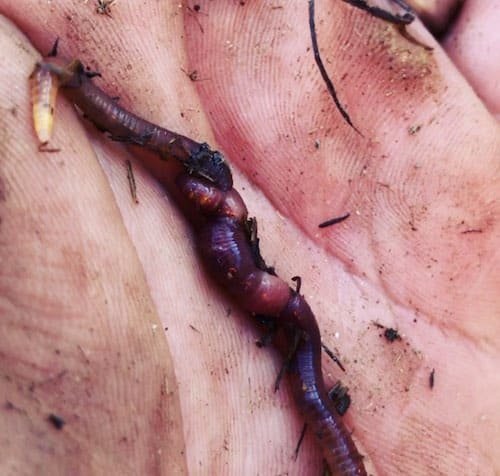Every Little Thing You Required to Learn About Red Wigglers for Composting
Red wigglers, or Eisenia fetida, play a crucial duty in the realm of composting, transforming natural waste into valuable soil modifications. The procedure of establishing up a worm bin and preserving it can posture obstacles.
What Are Red Wigglers?

(red wiggler compost bin)
Belonging To North America, red wigglers are surface-dwelling organisms that choose damp, warm environments abundant in decaying organic matter. Their diet regimen consists largely of rotting plant material, food scraps, and other natural debris, which they eat and damage down efficiently. As they digest this material, they create nutrient-rich spreadings that enhance soil fertility.
Red wigglers are hermaphroditic, possessing both male and female reproductive organs, and can recreate promptly under ideal problems. This capacity makes them an ideal option for composting systems, as their populace can enhance quickly. Their strength and adaptability to various settings better solidify their value in lasting waste monitoring practices. In general, red wigglers are crucial contributors to the process of reusing natural waste right into important garden compost.
Advantages of Utilizing Red Wigglers
Utilizing red wigglers in composting systems supplies numerous advantages that enhance both the effectiveness of waste administration and the quality of the resulting garden compost. These worms, medically called Eisenia fetida, are particularly effective at damaging down raw material, transforming cooking area scraps and yard waste into nutrient-rich garden compost at an increased rate.
Among the key advantages of utilizing red wigglers is their capacity to eat big amounts of natural material, frequently processing their weight in food waste daily. This high usage rate results in faster decomposition and reduces the quantity of waste sent out to landfills. Moreover, the spreadings generated by red wigglers are rich in crucial nutrients, beneficial microorganisms, and enzymes, making them an exceptional plant food for gardens and plants.
Furthermore, red wigglers grow in a selection of atmospheres, making them versatile for both indoor and outdoor composting systems - red wigglers. Their existence in a compost bin helps to freshen the product, protecting against smells and promoting a healthy composting procedure. In general, employing red wigglers not just adds to reliable waste management however also supports lasting gardening techniques with the manufacturing of premium compost
(redworms for composting)
Establishing Your Worm Container
To efficiently set up a worm container, it is important to pick a suitable container that satisfies the needs of red wigglers while offering a favorable atmosphere for composting. A suitable bin can be made from plastic, wood, or metal, with an ability of at the very least 1 square foot for every pound of worms.
Guarantee the container has sufficient water drainage openings to protect against excess dampness, as red wigglers prosper in a damp, but not waterlogged, environment. red wigglers. The container should also be ventilated to offer adequate air flow, stopping anaerobic conditions that could hurt the worms
A perfect place for the worm container is a great, dark area, devoid of straight sunshine and severe temperature levels, as red wigglers choose a temperature array of 55 to 77 levels Fahrenheit.
Prior to presenting the worms, prepare bedding products such as shredded paper, cardboard, or coconut coir, which will certainly supply both habitat and food. Dampen the bed linens lightly to produce an inviting environment for the worms. Take into consideration placing a cover on the bin to preserve moisture and lower insects, while ensuring it can be quickly removed for maintenance.
Feeding and Care Standards
Feeding red wigglers is a crucial facet of preserving a healthy and balanced composting system. These worms flourish on a diverse diet regimen, mainly composed of organic materials such as fruit and vegetable scraps, coffee premises, and smashed eggshells. It is vital to prevent feeding them meat, dairy products, and oily foods, as these can produce undesirable smells and draw in parasites.
When presenting food to your worm container, slice or shred products into smaller you could try these out sized items to help with quicker decay. Start with small amounts to assess the worms' usage rate, progressively boosting the amount as they adapt. It is advisable to alternate feeding places within the bin to urge detailed mixing and oygenation of the compost.

Troubleshooting Common Issues
Keeping a thriving worm composting system can often offer challenges that need attention and troubleshooting. Typical issues consist of an unpleasant odor, which often shows overfeeding or the visibility of anaerobic problems. To correct this, reduce the quantity of food included and make sure correct oygenation by mixing the bed linen product.
An additional regular issue is the getaway of worms from the container. This can occur because of excessive moisture or inappropriate environmental problems. Consistently examine the dampness degrees, going for a moist however not soaked uniformity, and maintain optimum temperatures between 60-80 ° F(15-27 ° C )to develop a comfy habitat for your red wigglers.
Bugs, such as fruit flies, can also get into worm containers. red wigglers. To combat this, cover food scraps with a layer of bed linens or shredded paper to discourage flies from laying eggs. In addition, make sure that any food added is fresh and without mold and mildew, which can bring in undesirable insects
Finally, if your worms appear inactive, look for stress and anxiety factors such as temperature level fluctuations or insufficient moisture. Resolving these common issues will help maintain a healthy and balanced and efficient worm composting system.
Verdict
In summary, red wigglers, or Eisenia fetida, play a vital function in lasting waste management via vermicomposting. Their ability to efficiently transform natural waste right into nutrient-dense castings improves soil health and wellness and advertises plant growth. Proper arrangement and upkeep of a worm bin, in addition to adherence to feeding standards, ensure a growing ecological community that reduces landfill contributions. Attending to typical issues immediately further supports the efficiency of this environmental practice, adding to ecological sustainability and agricultural performance.